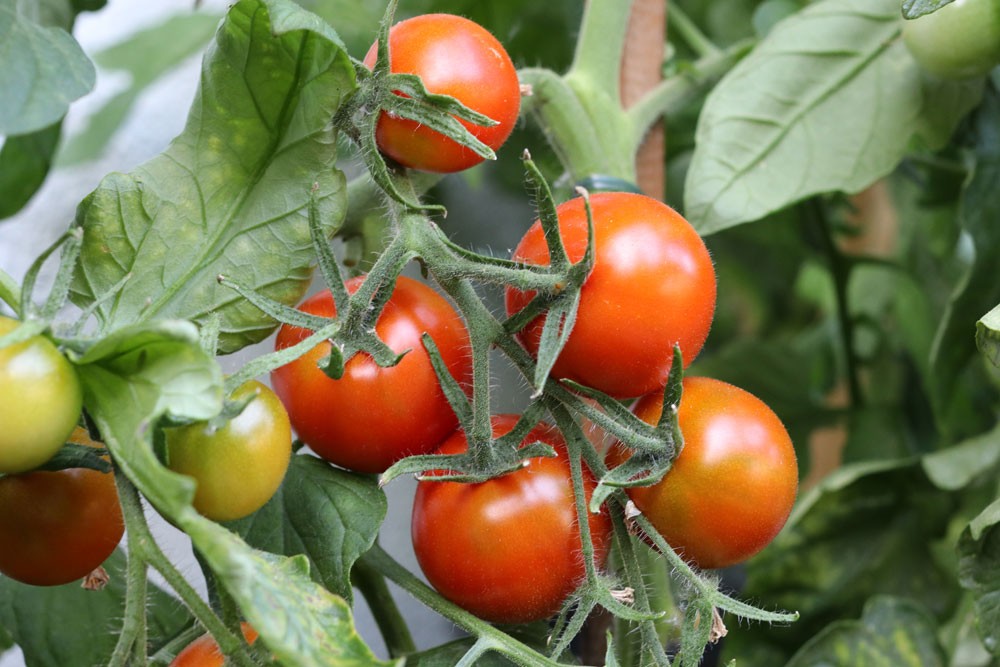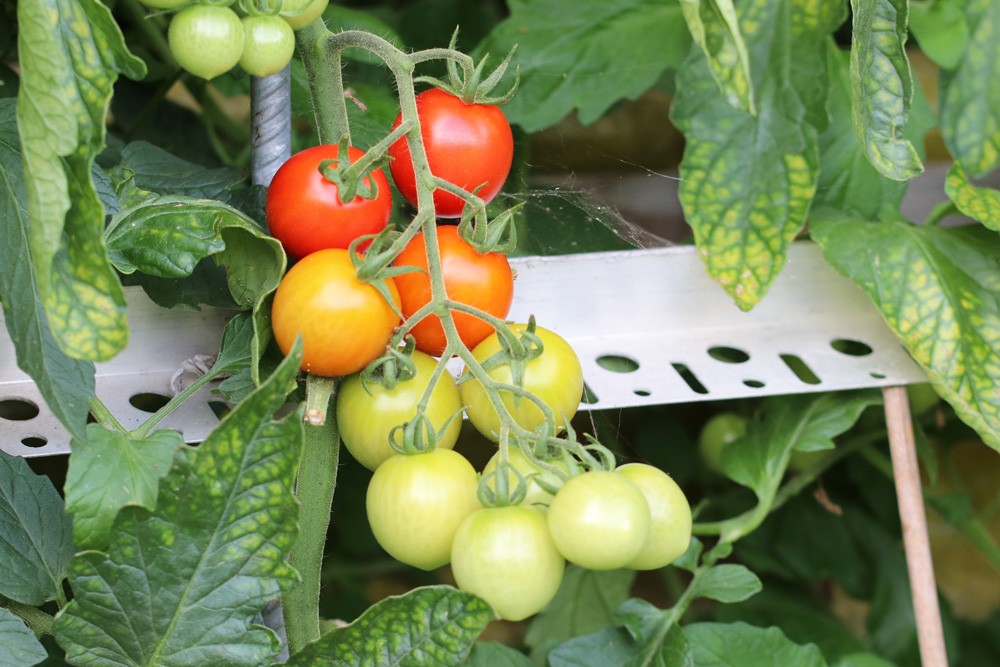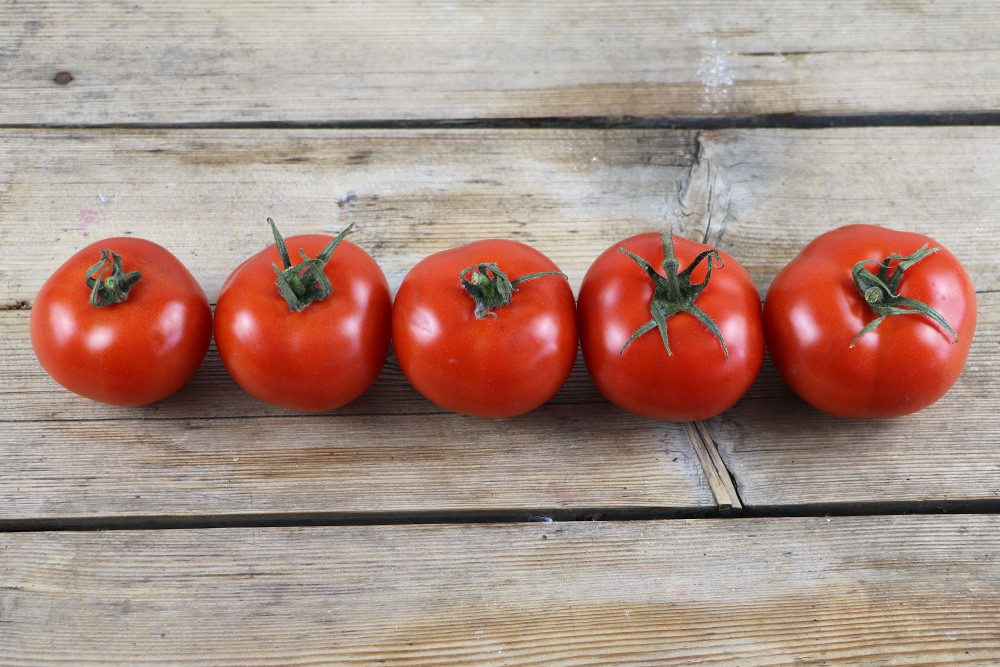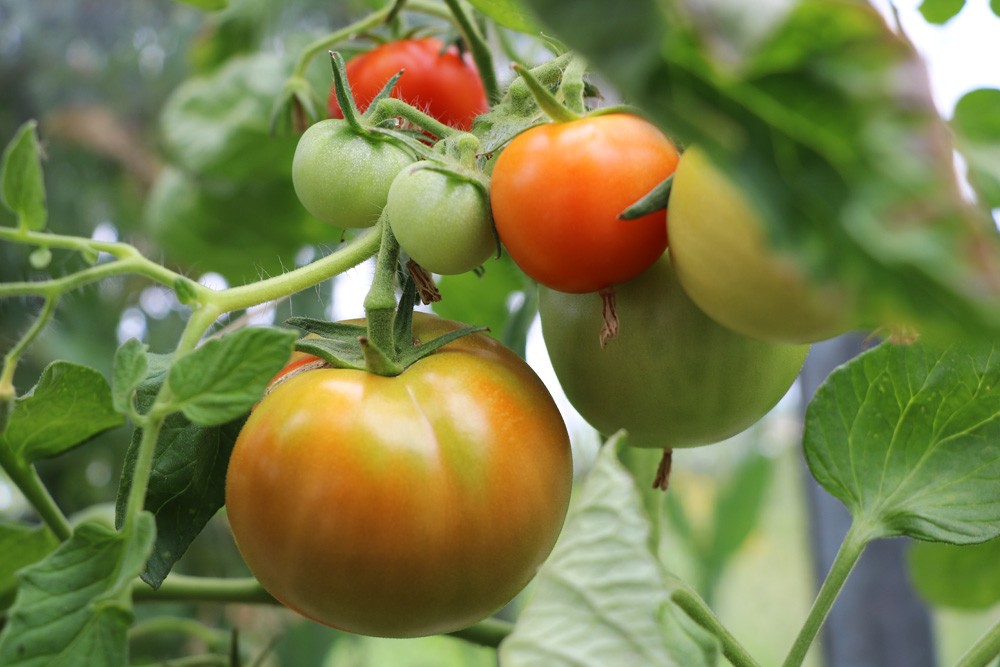Too well-intentioned water supply is noticeable not only visually on the tomatoes. Because long-lasting moisture favors a variety of tomato diseases, which can even destroy entire stocks. Read here what to do in case of waterlogging and how you can save your tomatoes!
Tomatoes like it moist, but by no means wet! However, if the plants receive too much water, you should act quickly. This is because prolonged moisture and waterlogging promote a variety of tomato diseases. Although water overload can weaken the plants, many plants can be saved with a little skill. Depending on whether the plants were cultivated in tubs or outdoors, there are different ways of doing this.
Contents
Symptoms of overwatering
If the tomato plants have received too much water, this can first be seen in the soil. Ideally, this is slightly moist, with the surface of the soil sometimes even dried. However, overwatering results in the roots receiving more water than they can absorb. As a result, the water remains on the surface of the soil, making it wet and muddy. Subsequently, overwatering is also noticeable on the plants:
- Leaves are limp and hang down
- turn yellow
- leaves curl up
- fruits burst open
Consequences of overwatering
As soon as the tomato plants show symptoms of overwatering, you should act quickly. After all, too much water not only affects the appearance and taste of tomatoes, but also the health of the plant! The moist environment provides the optimal conditions for the spread of numerous pathogens, which in the worst case lead to the death of the tomato plant:
- late blight
- Velvet spot disease
- Gray mold
- powdery mildew
- Bacterial wilt
- Fruit and stem rot
- Tomato wilt
First aid for tub tomatoes

In principle, tomatoes can be grown in tubs or pots without any problems. It is important that the containers have drainage holes so that the excess water can drain off. However, if the plants are watered too much and waterlogging forms, quick action is required! Tub tomatoes that have been watered too much can be saved as follows:
Check roots
When tomato plants are watered too much, the roots literally drown. It is not uncommon for the root system to rot due to the constant moisture, making it unable to supply the plant. It is therefore advisable to first check the health of the roots:
- Carefully remove the plant from the container
- remove excess substrate from the roots
- preferably with a sharp knife
- healthy roots are white
- rotten roots are brown
Dry and shade the plant
Tomato plants can usually be saved if their roots are still white and healthy. In this case, it is important to remove the excess moisture and then place the plant in fresh substrate:
- wrap absorbent material around the root ball.
- for example, paper or coconut fiber
- Place the plant in fresh substrate
- do not water!
Care after overwatering
After the tomato is placed in fresh substrate, it is necessary to slowly strengthen it. After all, overwatering greatly weakens the roots, so they can no longer provide the plant with sufficient nutrients and water. Therefore, the tomato plant must be slowly nurtured as follows:
- Place the plant in partial shade
- do not fertilize and water for the time being!
- but only when the plant has recovered
- shows itself in taut leaves
- best to check in the morning
Tip: The surface of the soil should dry completely in the meantime, but not the entire soil! To check whether the soil is already dry, a thumb test is recommended.
First aid for outdoor tomatoes

Ideally, in the open ground watering is always adjusted to the weather, so that on rainy days watering is not necessary. However, outdoors it is quite possible that it rains heavily for several days, and as a result, the tomatoes receive too much water.
Protect plants from moisture
Outdoors, tomato plants are exposed to the weather, which must necessarily be taken into account when watering. Therefore, during particularly wet periods, it is advisable to protect the tomatoes from too much moisture. In addition to a tomato canopy or tomato roof, plastic film can be used for this purpose:
- Poke holes in the film.
- Oxygen can get into the soil
- Moisture can escape
- Pull off the foil when it stops raining
Tip: Many plants in the garden are watered by automatic irrigation. To avoid over-supply of water, the irrigation system should be turned off on rainy days.
Shade plant
Roots are weakened due to overwatering, so water and nutrient uptake is compromised. Therefore, to prevent the plants from sunburn, they should be shaded for the time being. In the open field, the following are some of the options for this:
- Parasol
- Sun awning
- Tomato canopy
Care after overwatering

In particularly rainy periods, it often happens that the soil becomes very wet and even muddy. However, so that the soil is not compacted, and / or destroyed, in any case should not walk through the mud. To provide dry spots for the tomato plants, some compost or soil can be spread around the plants if necessary. In addition, it is advisable to observe the following:
- do not water and fertilize!
- water only when the surface of the soil has dried out
- then water regularly
- check the plant regularly for symptoms of disease
Prevent overwatering
Overwatering of tomato plants can be prevented by setting up a watering schedule. How often you water tomatoes depends on their location. For outdoors, it is essential to take into account the weather! In general, however, the following guidelines apply:
- Water tomatoes once a day
- preferably in the early morning hours
- do not water outdoor tomatoes when it rains
- water only when the upper layer of soil has dried out
- check the soil for dryness with a thumb test
Tip: You should always adjust the amount of water to the respective tomato variety, because small tomatoes need less water than large tomatoes!


